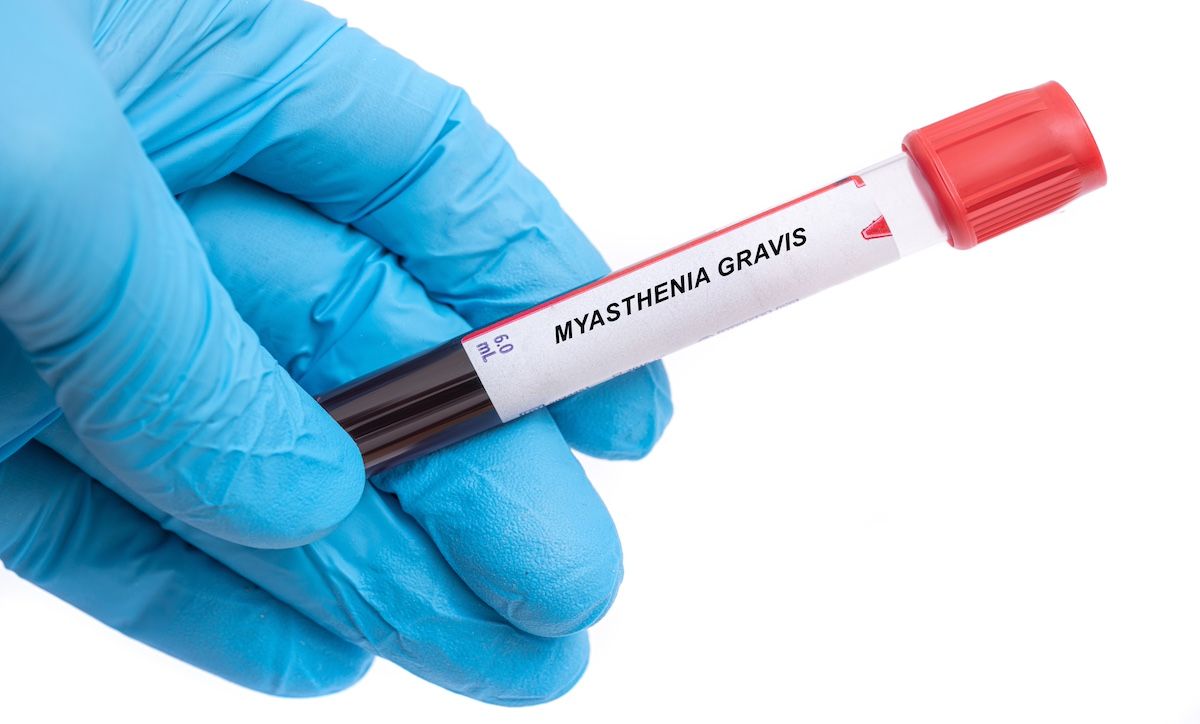- Center on Health Equity & Access
- Clinical
- Health Care Cost
- Health Care Delivery
- Insurance
- Policy
- Technology
- Value-Based Care
Researchers Characterize Distinct Biomarker Profile of AChR+ MG
The potential value of these biomarkers may help differentiate acetylcholine receptor antibody seropositive (AChR+) myasthenia gravis (MG) from healthy patients.
A group of potential biomarkers for the most common subtype of myasthenia gravis (MG) was identified in a new study published in Cell Press, and the authors believe it could aid in predicting response to treatment and identifying optimal patients for novel treatments.1
The potential value of these biomarkers helped differentiate acetylcholine receptor antibody seropositive (AChR+) myasthenia gravis, found in the majority of patients with MG, from healthy patients.1,2
Image credit: luchschenF - stock.adobe.com

“Despite the steady improvement in treating autoimmune inflammatory neuromuscular diseases, including MG, essential pathophysiologicalprocesses underlying the chronic autoimmune response and muscle fatigue in AChR+ MG remain unknown,” the researchers explained.1 “Recognizing specific inflammatory protein biomarkers relating to distinct immune pathways confers additional insights into the underlying pathophysiology while offering the possibility to use molecular phenotypes in deciding what treatment to choose instead of relying on experience-based subgroups related to age, sex, etc. Therefore, developing objective and reliable MG biomarkers in disease diagnosis, follow-up, and predicting disease activity is needed for clinical follow-up and clinical trials and is considered one of the top priority areas in MG research.”
The cross-sectional analysis included serum samples from nearly 100 patients with AChR+ MG, as well as 77 matched controls, finding 23 inflammatory serum proteins distinguishing those with the disease from the controls. These biomarkers, the researchers explained, represent the broad activation of the immune system through innate and acquired immune responses.
C-C chemokine ligand 28 (CCL28), for the first time, demonstrated links to MG. With immune cell recruiting properties, the researchers suggest the protein could be an important player in the pathogenesis of the disease. CCL28, along with CCL20 were increased by approximately 75% of patients with the disease.
The analysis also suggested an important role of tumor necrosis factor (TNF) in the pathogenesis of disease, finding decreased levels of TNFSF14—also known as LIGHT—in the group of patients with MG, particularly those without immunosuppression.
Eukaryotic translation initiation factor 4E-binding protein 1 (4E-BP1)—considered the third most important biomarker among the patients with MG—was found to be inversely correlated with TNFSF14. Elevated levels of the biomarker may suggest a dysregulated mTORC–4E-BP–eIF4E axis, which controls translation of mRNAs that encode control immune-regulatory proteins. A dysregulated mTORC–4E-BP–eIF4E axis may create T-cell dysfunction and autoimmunity.
The researchers also highlighted the importance of ST1A1, which was reduced in patients with MG. Notably, ST1A1 had significant associations with CASP-8, AXIN1, SIRT2, and STAMBP.
Other biomarkers with identified as having important value by Boruta algorithm, were TGF-α, FGF-23, EN-RAGE, IL-10, IL-6, and SIRT2.
Among the 98 patients with MG included in the study were 46 with early-onset MG and 52 with late-onset MG. The researchers observed differences between the 2 subgroups, with logistic regression identifying significant differences in TGF-β1 and OPG. Immunosuppression status was also associated with differences in protein biomarkers, withCXCL10, TNFSF14, CCL11, IL-17C, and TGF-α differing based on patients with and without immunosuppressants.
“A prospective follow-up multi-center study before and after treatment, and comparison to other neuroimmune diagnoses, would be required to validate the sensitivity, specificity, and usefulness of the defined inflammatory protein profile in the follow-up of treatment response and predict the disease course in individual MG patients,” the authors concluded.
References
- Bhandage AK, Kenina V, Huang Y-F, et al. Serum protein biomarker profile distinguishes acetylcholine receptor antibody seropositive myasthenia gravis patients from healthy controls. Cell Press. Published online July 22, 2024. doi:10.1016/j.isci.2024.110564
- Lazaridis K, Tzartos SJ. Autoantibody specificities in myasthenia gravis; implications for improved diagnostics and therapeutics. Front Immunol. 2020;11:212. doi:10.3389/fimmu.2020.00212.
